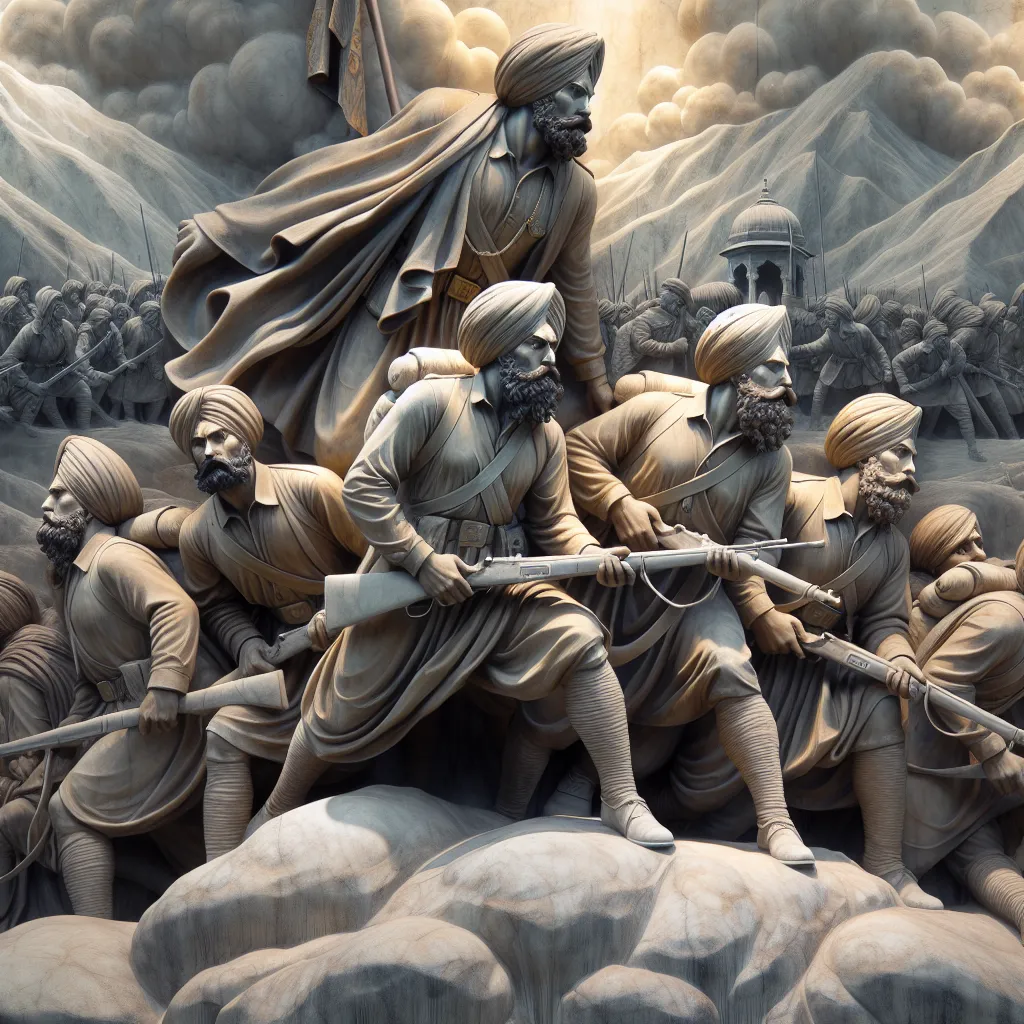
- Published on
- Authors

- Name
- You
The Battle of Saragarhi: A Tale of Sikh Valor and Heroism
In the annals of military history, certain battles stand out not just for their strategic significance but for the extraordinary valor displayed by the soldiers. One such epic event is the Battle of Saragarhi, fought on September 12, 1897, which remains a poignant testament to bravery and sacrifice. This article delves into the details of the battle, combining historical facts with mystical reflections on courage and duty.
Historical Context
British India and the Tribal Frontier
In the late 19th century, British India faced constant skirmishes with tribal Pashtun forces in the North-West Frontier Province (now Khyber Pakhtunkhwa, Pakistan). To maintain control, the British established a series of forts along the frontier, including Fort Lockhart and Fort Gulistan. The small outpost of Saragarhi, situated between these forts, was critical for communication.
The Sikh Regiment
The 36th Sikh Regiment, composed primarily of valiant Sikh soldiers, was tasked with manning these outposts. Known for their indomitable spirit and martial prowess, Sikhs have long been venerated as warriors. The regiment at Saragarhi consisted of 21 soldiers led by Havildar Ishar Singh.
The Battle Unfolds
The Attack on Saragarhi
On the morning of September 12, 1897, approximately 10,000 tribal warriors launched a fierce attack on Saragarhi, cutting off its communication with the rest of the world. Despite being heavily outnumbered, the Sikh soldiers decided to stand their ground. What ensued was an epic struggle, immortalizing the bravery of these 21 men.
| Time | Key Event |
|---|---|
| Morning | Tribal forces surround Saragarhi and begin their assault. |
| Mid-Morning | The Sikh soldiers repel initial attacks, inflicting heavy casualties. |
| Noon | Enemy breaches the wall; hand-to-hand combat ensues. |
| Afternoon | Havildar Ishar Singh orders his men to fall back to inner defenses. |
| Late Afternoon | One by one, the Sikh soldiers fight to their last breath. |
The Aftermath and Legacy
The Ultimate Sacrifice
By the evening, all 21 soldiers had laid down their lives, but not before inflicting significant damage on the enemy and delaying their advance. The ultimate price paid by these brave souls allowed the British reinforcements to arrive and secure the other forts.
Recognition
In an unprecedented move, all 21 Sikh soldiers were posthumously awarded the Indian Order of Merit, the highest gallantry award for Indian soldiers at the time, equivalent to the Victoria Cross.
Mystical Reflections on Valor
From a mystical perspective, the Battle of Saragarhi transcends its military significance to symbolize the eternal struggle between light and darkness, courage and fear. The Sikh philosophy, deeply rooted in the concept of 'Sant Sipahi' (Saint-Soldier), illuminates the union of spiritual and martial strength.
Chardi Kala: The doctrine of 'Chardi Kala' or perpetual optimism forms the cornerstone of Sikh ethos. The bravery at Saragarhi is a manifestation of this spirit—undaunted even in the face of impending death.
Self-Sacrifice: The sacrifice at Saragarhi echoes the profound spiritual teaching of placing duty and righteousness above personal gain. It is a vivid interpretation of karma yoga, the path of selfless action, as delineated in the Bhagavad Gita.
Conclusion
The Battle of Saragarhi is not just an episode in military history but a timeless saga of human courage, duty, and sacrifice. It serves as an enduring source of inspiration, blending the physical and metaphysical realms to remind us of the limitless capabilities of the human spirit when guided by honor and truth.
May this tale of valor continue to inspire future generations to stand firm in the face of adversity, holding aloft the torch of unwavering courage and integrity.
